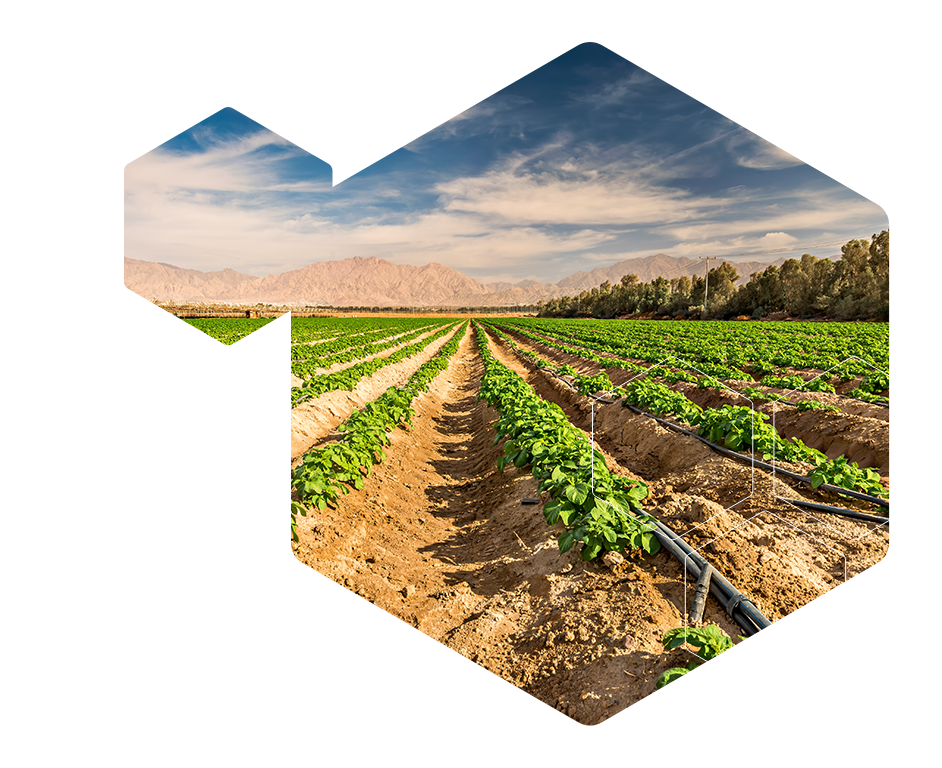Climate change impacts are already being felt everywhere in the world and increasingly adaptation is required. Many countries are implementing adaption plans for unavoidable impacts. Innovation and technology can provide helpful solutions. This chapter discusses the role of technology in adaptation, including both its potential and the challenges it faces, as well as the implementation funding available.
IPCC (2022). Working group II sixth assessment report. Impacts, adaptation and vulnerability. Summary for policymakers. Geneva: Intergovernmental Panel on Climate Change (IPCC). Available at: https://www.ipcc.ch/working-group/wg2/
NOAA (2022a). Carbon dioxide peaks near 420 parts per million at Mauna Loa observatory. National Oceanic and Atmospheric Administration (NOAA). Available at: https://research.noaa.gov/article/ArtMID/587/ArticleID/2764/Coronavirus-response-barely-slows-rising-carbon-dioxide [accessed August 2022].
Reliefweb (2022). Pakistan: 2022 monsoon floods- Situation Report No. 7 (as of 23 September 2022) - Pakistan. Reliefweb. Available at: https://reliefweb.int/report/pakistan/pakistan-2022-monsoon-floods-situation-report-no-7-23-september-2022 [accessed October 2022].
Reliefweb (2022a). An alarming cycle of drought, malnutrition and disease in Baidoa - Somalia. Reliefweb. Available at: https://reliefweb.int/report/somalia/alarming-cycle-drought-malnutrition-and-disease-baidoa [accessed October 2022].
WMO (2022). Press release: This heatwave is the new normal. World Meteorological Organization (WMO). Available at: https://public.wmo.int/en/media/news/%E2%80%9C-heatwave-new-normal%E2%80%9D-says-wmo-secretary-general [accessed August 2022].
ScienceDaily (2022). Study reveals an unprecedented change in Europe's fire regime: Spring and summer seasons with a high fire risk. ScienceDaily. Available at: https://www.sciencedaily.com/releases/2022/06/220630114543.htm [accessed August 2022].
Kirk, A., D. Blood, and P. Gutierrez (2022). Europe’s record summer of heat and fires – visualised. The Guardian. Available: at https://www.theguardian.com/environment/ng-interactive/2022/jul/26/how-europe-has-been-hit-by-record-fire-damage-and-temperatures.
European Commission (2021). Forging a climate-resilient Europe - the new EU Strategy on Adaptation to Climate Change. Communication from the commission to the european parliament, the council, the european economic and social committee and the committee of the regions, Brussels: European Commission.
PRC (2022). China prioritizes mitigation, adaptation in addressing climate change. The State Council. The People's Republic of China. Available at: https://english.www.gov.cn/statecouncil/ministries/202206/15/content_WS62a99e7dc6d02e533532c317.html [accessed August 2022].
PRC (2013). National Strategy for Climate Change Adaptation. Beijing: Government of the People's Republic of China.
LSE (2022). The national strategy for climate change adaptation - climate change laws of the world: China. London School of Economics (LSE) Graham Research Institute on Climate Change and the Environment. Available at: https://climate-laws.org/geographies/china/policies/the-national-strategy-for-climate-change-adaptation [accessed August 2022].
AAI (2022). Africa adaptation initiative. Africa Adaptation Initiative (AAI). Available at: https://africaadaptationinitiative.org [accessed August 2022].
African Union (2022). African union climate change and resilient development strategy and action plan (2022-2032). Addis Ababa: African Union. Available at: https://au.int/en/documents/20220628/african-union-climate-change-and-resilient-development-strategy-and-action-plan
GCA (2022). The global commission on adaptation - global center on adaptation. Global Center on Adaptation (GCA). Available at: https://gca.org/about-us/the-global-commission-on-adaptation/ [accessed October 2022].
European Commission (2013). An EU Strategy on adaptation to climate change. Communication from the commission to the european parliament, the council, the European Economic and Social Committee and the Committee of the Regions, Brussels: European Commission.
UNFCCC (2022a). NAP central. United Nations Framework Convention on Climate Change (UNFCCC). Available at: https://www4.unfccc.int/sites/NAPC/Pages/Home.aspx [accessed August 2022].
UNFCCC (2022b). National adaptation programmes of action. United Nations Framework Convention on Climate Change (UNFCCC). Available at: https://unfccc.int/topics/resilience/workstreams/national-adaptation-programmes-of-action/introduction [accessed August 2022].
UNEP (2021a). Adaptation gap report 2021: The gathering storm. Nairobi: United Nations Environment Programme (UNEP). Available at: https://www.unep.org/resources/adaptation-gap-report-2021.
TT:Clear (2022). Technology needs assessment. UNFCCC. Available at: https://unfccc.int/ttclear/tna [accessed October 2022].
O’Connor, R., A. Dixit, and A. Dinshaw (2022). 3 things to know about the adaptation components of countries’ updated NDCs. World Resources Institute (WRI). Available at: https://www.wri.org/insights/3-things-know-about-adaptation-components-countries-updated-ndcs [accessed October 2022].
Altieri, M. and P. Koohafkan (2008). Enduring farms: Climate change, smallholders and traditional farming communities. Environment and Development Series, Penang, Malaysia: Third World Network (TWN). Available at: https://www.researchgate.net/publication/252167278_Enduring_Farms_Climate_Change_Smallholders_and_Traditional_Farming_Communities
FAO (2012). Factsheet: Smallholders and family farmers. Rome: Food and Agriculture Organization of the United Nations (FAO). Available at: https://www.fao.org/fileadmin/templates/nr/sustainability_pathways/docs/Factsheet_SMALLHOLDERS.pdf
FAO (2022b). Small family farmers produce a third of the world’s food. Food and Agriculture Organization of the United Nations (FAO). Available at: https://www.fao.org/news/story/en/item/1395127/icode/ [accessed September 2022].
Dechezlepretre, A., et al. (2020). Invention and global diffusion of technologies for climate change adaptation : A patent analysis. Washington, DC: World Bank. Available at: https://openknowledge.worldbank.org/handle/10986/33883
Schipper, E.L.F. (2020). Maladaptation: When adaptation to climate change goes very wrong. One Earth, 3(4), 409-14.
Rose, D. (2020). The fourth agricultural revolution is coming – but who will really benefit? University of Reading. Available at: https://research.reading.ac.uk/research-blog/the-fourth-agricultural-revolution-is-coming-but-who-will-really-benefit [accessed August 2022].
GCA (2020b). State and trends in adaptation report 2020. Rotterdam: Global Centre on Adaptation (GCA). Available at: https://gca.org/reports/state-and-trends-in-adaptation-report-2020/
UNEA (2022). Proceedings, report, ministerial declaration, resolutions and decisions UNEA 5.2. United Nations Environment Programme (UNEP). Available at: http://www.unep.org/environmentassembly/unea-5.2/proceedings-report-ministerial-declaration-resolutions-and-decisions-unea-5.2
Poonam, S. (2022). No power, no fans, no AC: The villagers fighting to survive India’s deadly heatwaves. MIT Technology Review, Available at: https://www.technologyreview.com/2022/07/05/1054750/how-indian-villagers-are-coping-with-the-deadly-heatwaves [accessed August 2022].
FAO (2015). Climate change and food security: risks and responses. Rome: Food and Agriculture Organization of the United Nations (FAO). Available at: https://www.fao.org/3/i5188e/I5188E.pdf
OECD (2022a). Aggregate trends of climate finance provided and mobilised by developed countries in 2013-2020. Paris: Organisation for Economic Co-operation and Development (OECD). Available at: https://www.oecd.org/finance/aggregate-trends-of-climate-finance-provided-and-mobilised-by-developed-countries-in-2013-2020-d28f963c-en.htm
CPI (2021). Global landscape of climate finance 2021. Climate Policy Initiative. Available at: https://www.climatepolicyinitiative.org/publication/global-landscape-of-climate-finance-2021/
UNFCCC (2022d). UNFCCC climate finance data portal. United Nations Framework Convention on Climate Change (UNFCCC). Available at: https://unfccc.int/climatefinance?home [accessed September 2022].
Adaptation Fund (2022). Innovation Funding. Adaptation Fund. Available at: https://www.adaptation-fund.org/apply-funding/innovation-grants/ [accessed September 2022].
CTCN (2022). Adaptation Fund Climate Innovation Accelerator (AFCIA). UN Climate Technology Centre & Network (CTCN). Available at: https://www.ctc-n.org/technical-assistance/adaptation-fund-climate-innovation-accelerator-afcia [accessed September 2022].
